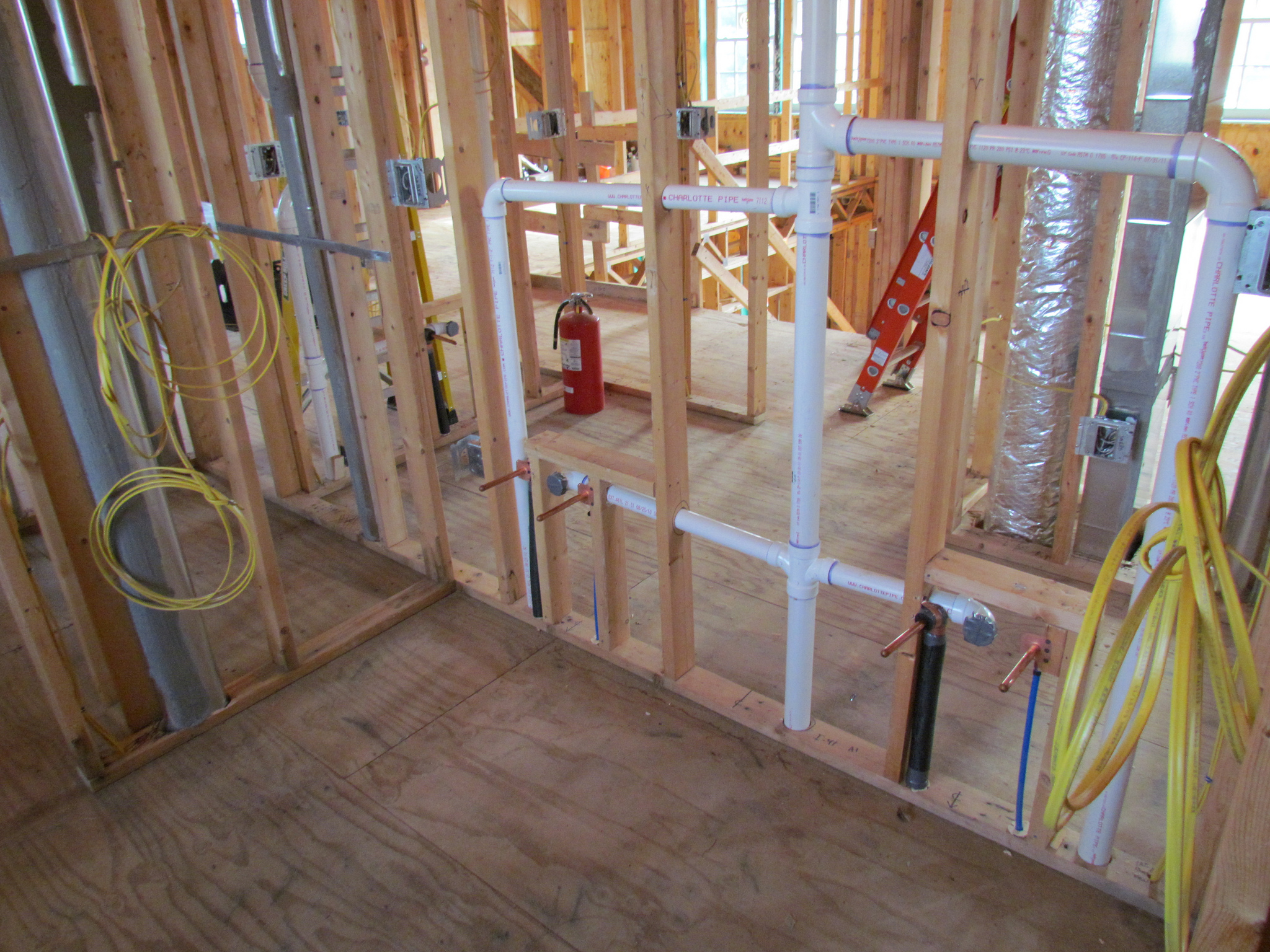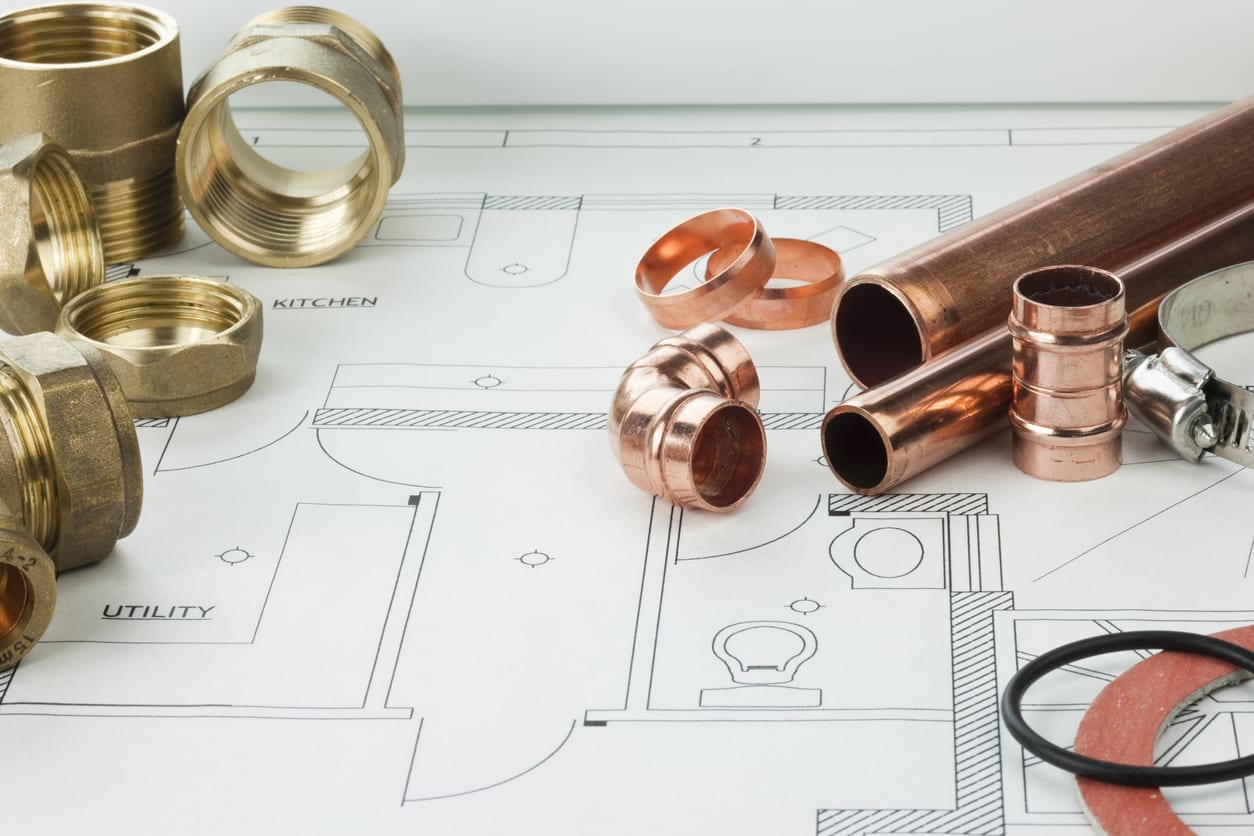Essential Insights About Your Home's Plumbing System Anatomy
Essential Insights About Your Home's Plumbing System Anatomy
Blog Article
Each person has got their private piece of advice involving Anatomy of a House: Understanding the Components.

Understanding just how your home's pipes system works is important for every home owner. From supplying clean water for drinking, cooking, and bathing to securely eliminating wastewater, a well-maintained plumbing system is critical for your family's health and wellness and comfort. In this thorough guide, we'll discover the intricate network that comprises your home's pipes and deal tips on upkeep, upgrades, and handling common concerns.
Intro
Your home's plumbing system is greater than just a network of pipes; it's an intricate system that ensures you have accessibility to clean water and efficient wastewater elimination. Knowing its elements and how they interact can aid you stop costly fixings and guarantee whatever runs smoothly.
Fundamental Components of a Pipes System
Pipes and Tubes
At the heart of your plumbing system are the pipelines and tubing that bring water throughout your home. These can be made of various materials such as copper, PVC, or PEX, each with its advantages in terms of durability and cost-effectiveness.
Components: Sinks, Toilets, Showers, etc.
Components like sinks, bathrooms, showers, and bathtubs are where water is made use of in your house. Understanding just how these components connect to the pipes system assists in diagnosing troubles and preparing upgrades.
Valves and Shut-off Factors
Valves regulate the circulation of water in your plumbing system. Shut-off shutoffs are important during emergency situations or when you need to make repair work, allowing you to separate parts of the system without disrupting water circulation to the entire home.
Water Supply System
Main Water Line
The major water line connects your home to the community water or a private well. It's where water enters your home and is distributed to different fixtures.
Water Meter and Stress Regulator
The water meter procedures your water usage, while a stress regulatory authority makes certain that water flows at a risk-free pressure throughout your home's pipes system, protecting against damages to pipes and fixtures.
Cold Water vs. Hot Water Lines
Recognizing the difference between cold water lines, which supply water directly from the primary, and warm water lines, which lug warmed water from the hot water heater, assists in troubleshooting and preparing for upgrades.
Water drainage System
Drain Pipes Water Lines and Traps
Drain pipelines lug wastewater away from sinks, showers, and toilets to the drain or sewage-disposal tank. Catches protect against sewage system gases from entering your home and additionally catch particles that could trigger clogs.
Ventilation Pipelines
Air flow pipelines allow air into the drainage system, preventing suction that could slow down drainage and cause traps to empty. Proper air flow is essential for keeping the stability of your plumbing system.
Importance of Proper Drainage
Guaranteeing proper drainage avoids backups and water damage. Frequently cleaning up drains and preserving catches can protect against pricey repair services and expand the life of your plumbing system.
Water Heating System
Sorts Of Hot Water Heater
Hot water heater can be tankless or typical tank-style. Tankless heating systems heat water on demand, while containers keep heated water for immediate usage.
Exactly How Water Heaters Link to the Plumbing System
Recognizing how hot water heater link to both the cold water supply and warm water circulation lines assists in identifying concerns like not enough warm water or leaks.
Maintenance Tips for Water Heaters
On a regular basis flushing your hot water heater to eliminate sediment, examining the temperature setups, and checking for leaks can extend its life-span and boost energy performance.
Typical Plumbing Problems
Leaks and Their Causes
Leaks can happen due to maturing pipes, loosened fittings, or high water stress. Resolving leaks without delay stops water damages and mold development.
Clogs and Obstructions
Clogs in drains pipes and bathrooms are usually caused by purging non-flushable items or an accumulation of grease and hair. Making use of drain displays and being mindful of what decreases your drains pipes can protect against blockages.
Indicators of Plumbing Issues to Watch For
Low tide pressure, slow-moving drains, foul odors, or uncommonly high water bills are indicators of potential pipes troubles that ought to be addressed immediately.
Plumbing Upkeep Tips
Regular Evaluations and Checks
Set up annual pipes inspections to capture issues early. Try to find indicators of leaks, corrosion, or mineral buildup in taps and showerheads.
DIY Upkeep Tasks
Easy tasks like cleansing faucet aerators, looking for bathroom leaks utilizing dye tablet computers, or shielding subjected pipelines in cold environments can avoid significant plumbing issues.
When to Call a Specialist Plumber
Know when a pipes concern needs specialist know-how. Attempting intricate repairs without proper understanding can lead to more damage and higher fixing costs.
Upgrading Your Pipes System
Reasons for Updating
Updating to water-efficient components or changing old pipelines can boost water quality, decrease water expenses, and raise the value of your home.
Modern Plumbing Technologies and Their Benefits
Discover technologies like wise leakage detectors, water-saving commodes, and energy-efficient hot water heater that can save money and decrease environmental effect.
Expense Factors To Consider and ROI
Compute the upfront costs versus long-lasting savings when thinking about plumbing upgrades. Lots of upgrades pay for themselves with minimized energy costs and less fixings.
Ecological Impact and Conservation
Water-Saving Fixtures and Appliances
Setting up low-flow taps, showerheads, and commodes can considerably minimize water use without giving up performance.
Tips for Reducing Water Use
Simple practices like repairing leaks quickly, taking shorter showers, and running full tons of laundry and meals can save water and reduced your energy expenses.
Eco-Friendly Pipes Options
Take into consideration lasting pipes products like bamboo for floor covering, which is durable and green, or recycled glass for countertops.
Emergency situation Readiness
Actions to Take Throughout a Pipes Emergency situation
Know where your shut-off shutoffs lie and just how to turn off the water supply in case of a ruptured pipeline or significant leakage.
Importance of Having Emergency Contacts Useful
Maintain get in touch with details for neighborhood plumbing professionals or emergency situation solutions conveniently offered for fast action during a plumbing situation.
Do It Yourself Emergency Fixes (When Appropriate).
Short-lived repairs like using air duct tape to patch a leaking pipeline or positioning a bucket under a trickling tap can minimize damage up until a specialist plumbing gets here.
Conclusion.
Comprehending the anatomy of your home's plumbing system encourages you to maintain it efficiently, saving time and money on repair services. By following normal maintenance regimens and staying educated about modern plumbing modern technologies, you can guarantee your plumbing system runs efficiently for years to find.
Understanding Your Home Plumbing System: A Comprehensive Guide
Plumbing System: The Lifeline of Your Home
At its core, the plumbing system is designed to perform two primary functions: bring fresh water into your home and remove wastewater. The system is a network of pipes, fixtures, and other components that transport water and sewage. Residential plumbing systems include potable water supply lines, drain-waste-vent (DWV) systems, and various plumbing fixtures that make water use in daily tasks possible.
Key Components:
Water Supply: This part of your plumbing system brings municipal water into your home, passing through the main water supply line. It s responsible for supplying all water needs, from drinking to bathing.
Drainage System: It carries waste and water away from your home to the sewer or septic system. This system includes all the piping within your home that leads to external sewage or septic systems.
Vent System: An essential yet often overlooked component, the vent system allows sewer gases to escape and lets air into the drainpipes, ensuring water and waste move correctly through the system.
Fixture: More Than Just Taps and Toilets
Plumbing fixtures are the most interactive parts of the plumbing system, including faucets, showers, toilets, and sinks. Each fixture is connected to the plumbing system and plays a role in either the delivery of freshwater or the disposal of waste and wastewater.
Types of Fixtures:
Faucets and Sinks: Used for washing hands, dishes, and other daily water needs.
Toilets: Dispose of human waste through the sewage system.
Bathtubs and Showers: Provide bathing facilities, requiring both hot and cold water supply.
Water Supply: The Source of Life
The water supply system is a critical component, ensuring that potable water is available throughout your home for various uses, including drinking, cooking, and cleaning. This system consists of pipes that distribute water to different parts of the house, controlled by valves to regulate the water flow.
Types of Plumbing: Materials and Methods
Various types of plumbing systems and materials are used in residential settings, each with its advantages and applications. From copper and PVC pipes for water supply to cast iron and ABS for drainage, the choice of materials can impact the longevity and efficiency of your plumbing system.
https://intownplumbingtx.com/articles/home-plumbing-system-guide/

Understanding Your Home Plumbing System: A Comprehensive Guide
Plumbing System: The Lifeline of Your Home
At its core, the plumbing system is designed to perform two primary functions: bring fresh water into your home and remove wastewater. The system is a network of pipes, fixtures, and other components that transport water and sewage. Residential plumbing systems include potable water supply lines, drain-waste-vent (DWV) systems, and various plumbing fixtures that make water use in daily tasks possible.
Key Components:
Water Supply: This part of your plumbing system brings municipal water into your home, passing through the main water supply line. It s responsible for supplying all water needs, from drinking to bathing.
Drainage System: It carries waste and water away from your home to the sewer or septic system. This system includes all the piping within your home that leads to external sewage or septic systems.
Vent System: An essential yet often overlooked component, the vent system allows sewer gases to escape and lets air into the drainpipes, ensuring water and waste move correctly through the system.
Fixture: More Than Just Taps and Toilets
Plumbing fixtures are the most interactive parts of the plumbing system, including faucets, showers, toilets, and sinks. Each fixture is connected to the plumbing system and plays a role in either the delivery of freshwater or the disposal of waste and wastewater.
Types of Fixtures:
Water Supply: The Source of Life
The water supply system is a critical component, ensuring that potable water is available throughout your home for various uses, including drinking, cooking, and cleaning. This system consists of pipes that distribute water to different parts of the house, controlled by valves to regulate the water flow.
Types of Plumbing: Materials and Methods
Various types of plumbing systems and materials are used in residential settings, each with its advantages and applications. From copper and PVC pipes for water supply to cast iron and ABS for drainage, the choice of materials can impact the longevity and efficiency of your plumbing system.
https://intownplumbingtx.com/articles/home-plumbing-system-guide/
As a passionate reader about Understanding Your Home's Plumbing Anatomy, I assumed sharing that post was a smart idea. So long as you liked our blog entry please be sure to share it. Thanks for taking the time to read it.
Apply Now Report this page